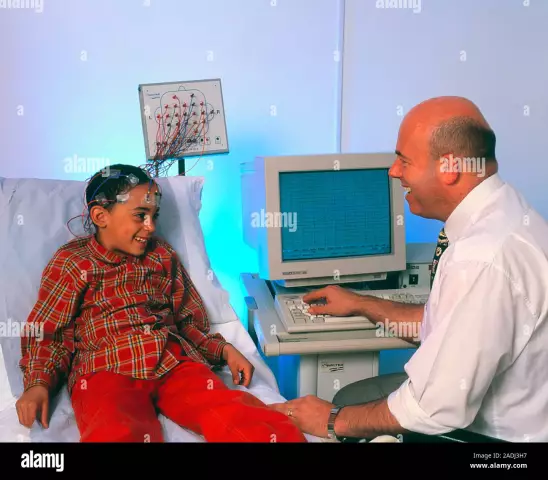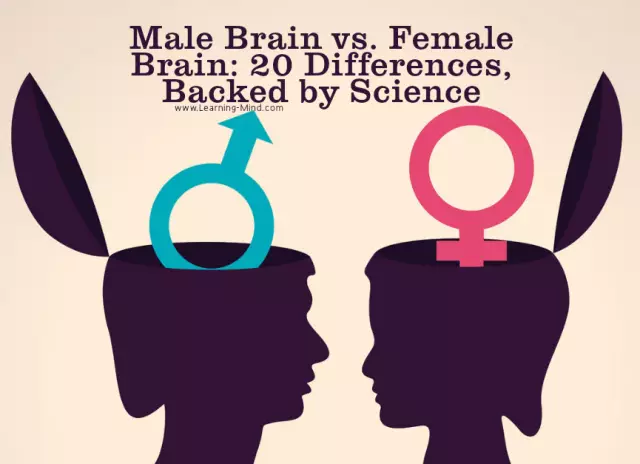- Author Rachel Wainwright [email protected].
- Public 2023-12-15 07:39.
- Last modified 2025-11-02 20:14.
Electroencephalography

Clinical electroencephalography is a way to study the functional activity of the nervous system. The method of electroencephalography is based on recording the electrical potentials of the brain and is a summation of simple processes occurring in the neurons of the brain.
Electroencephalography of the brain is prescribed for paroxysmal conditions, psychosomatic, cognitive, emotional, behavioral, mental, neurotic disorders, for craniocerebral injuries to assess their severity and assess the dynamics of brain recovery, discirculatory and vascular changes, in inflammatory diseases of the nervous system, in pathologies of the endocrine character.
Electroencephalography for children is prescribed for perinatal disorders of the nervous system.
A feature of the electroencephalography method is that it cannot be used to diagnose organic damage to the nervous system, and it is not intended to make a final diagnosis. The advantage of electroencephalography is that its results are objective, and it is possible to assess the state of the brain without serious intervention in the patient's body.
Clinical electroencephalography is considered the most adequate method for assessing the maturity of the nervous system, the state of the brain, in general, and for studying the neurophysiological basis of mental activity.
How the electroencephalography method is implemented
To conduct an examination, electrodes are attached to the patient's head, which are connected to a brain activity recorder.
Electrodes and recording devices differ depending on the task at hand.

Bridge electrodes are used for clinical electroencephalography of those patients who are able to stay in a reclining or sitting position for some time and follow the commands of the neurophysiologist conducting the study. Such electrodes can be used for encephalography in children after 3-5 years old and in adults who are conscious and in contact.
Cup electrodes are used to study the brain activity of unconscious patients, young children, for continuous electroencephalography of the brain and the study of brain activity during sleep.
Needle electrodes are used for examination during surgery to assess the depth of anesthesia and the general condition of the patient. Typically, electrodes are inserted into the scalp, and in neurosurgical operations they are inserted directly into the brain tissue.
Electroencephalography of children
Children with deviations in speech, motor and mental development are increasingly prescribed electroencephalography lately. The advantage of this method is that, despite the absence of seizures, the electroencephalography method can reveal pathological latent disorders of brain activity.
Electroencephalography is prescribed for children in such cases:
- with developmental delays, psychoemotional disorders of unexplained origin, incl. in cases of prescribing stimulating neurotropic treatment;
- to assess the compliance of brain development with the child's age;
- for differential diagnosis of epilepsy and control over the effectiveness of treatment in cases where there are complaints of frequent loss of consciousness, seizures, fainting, panic attacks, tics, episodes of freezing;
- with a deterioration in the child's performance at school and a sharp unreasonable violation of behavior. Electroencephalography in these cases is used to choose the right treatment method;
- with various sleep disorders: fears and nightmares, walking and talking in a dream;
- with tumors, injuries, cerebral blood flow disorders, and other brain diseases.
There are no contraindications to electroencephalography, the procedure does not require special preparation.
Found a mistake in the text? Select it and press Ctrl + Enter.






